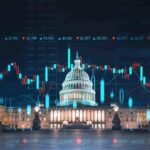During the spring of 2023, a sequence of failures put stock and cryptocurrency investors on edge as four banks – some of them crucial for the crypto market ecosystem – failed in relatively rapid succession.
The situation was made much scarier by substantial confusion driven, in part, by the fact that it was also alleged that one of the banks – the Silicon Valley Bank (SVB) – collapsed largely due to ringing the FED several minutes too late to receive a critical lifeline.
Additionally, the sequence of events shook public confidence in U.S. regional banks since the fact that SVB didn’t have a permanent Chief Risk Officer for about 8 months in the leadup to the collapse was identified as one of the key reasons for missing the discount window.
In turn, these circumstances highlighted what could arguably be called clear-cut hubris.
Still, after the four went under, there was a protracted period of calm until, in April, regulators seized the Philadelphia-based Republic First – not to be confused with First Republic, which fell last year.
Days later, one banking expert signaled his fears that the latest lender fatality may be but a portent of a greater crisis ahead.
Regional banks in danger as unrealized losses mount and depositors fear contagion
According to Joseph Lynyak, a banking attorney at Dorsey & Whitney, the first bank to have collapsed in 2024 will not be the last, and there is a substantial danger of additional failures in the range between the smaller community banks and the biggest ones.
According to the experts, the danger is twofold.
On the one hand, high interest rates have caused a significant depreciation of low-yield treasury securities held by the banks, and the struggling real estate market is also having an impact on the sector.
The former danger is seemingly further corroborated by the Federal Deposit Insurance Corporation (FDIC), which already stated that banks are sitting on substantial unrealized losses.
The closing of Republic First has also delivered a major hit to regional banks as it is likely only to drive more depositors to the relative safety of large banks – though they are far from completely safe given that, 16 years ago, even JPMorgan (NYSE: JPM) needed $25 billion in government aid, one of the biggest packages of the crisis.







